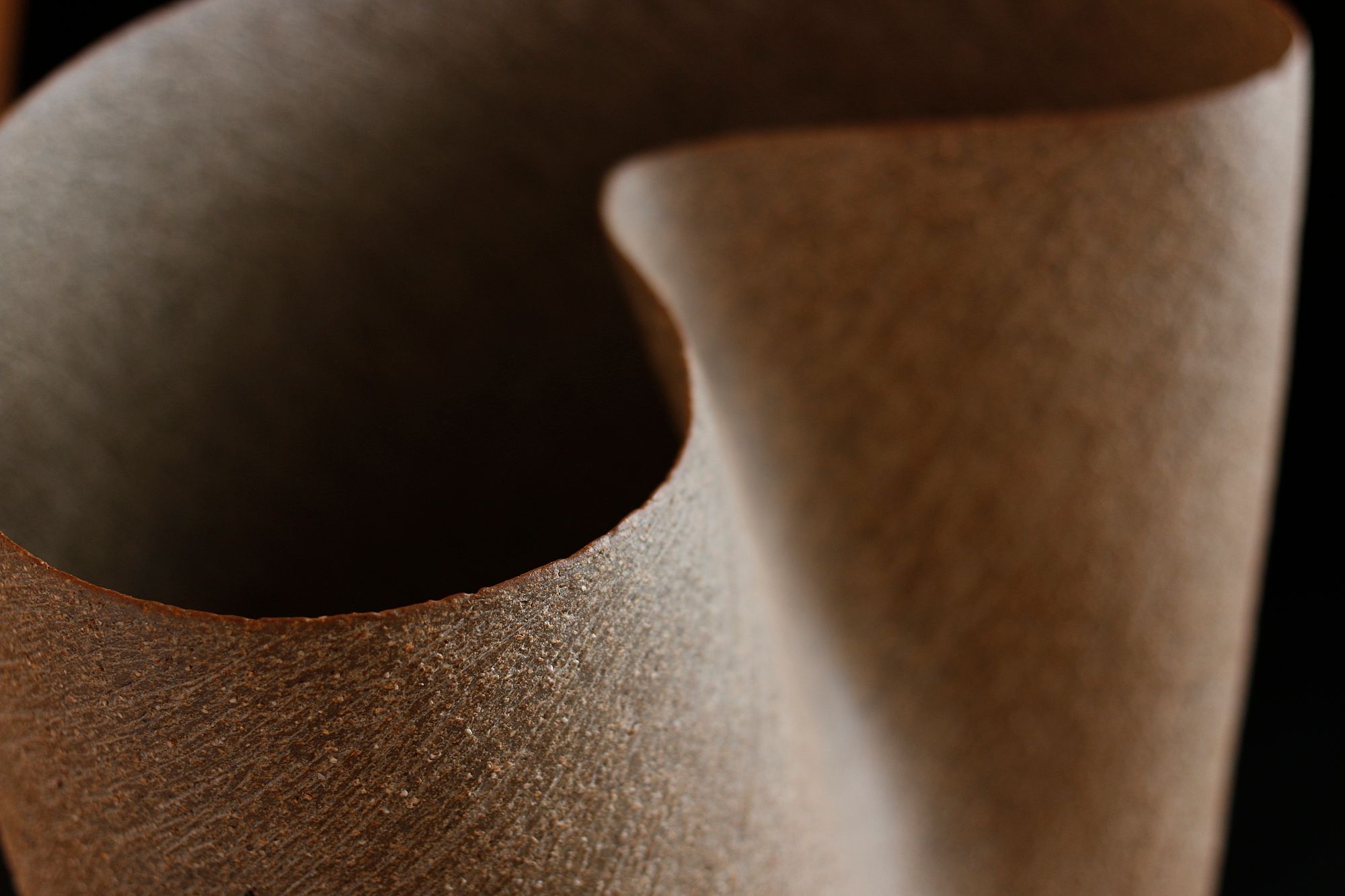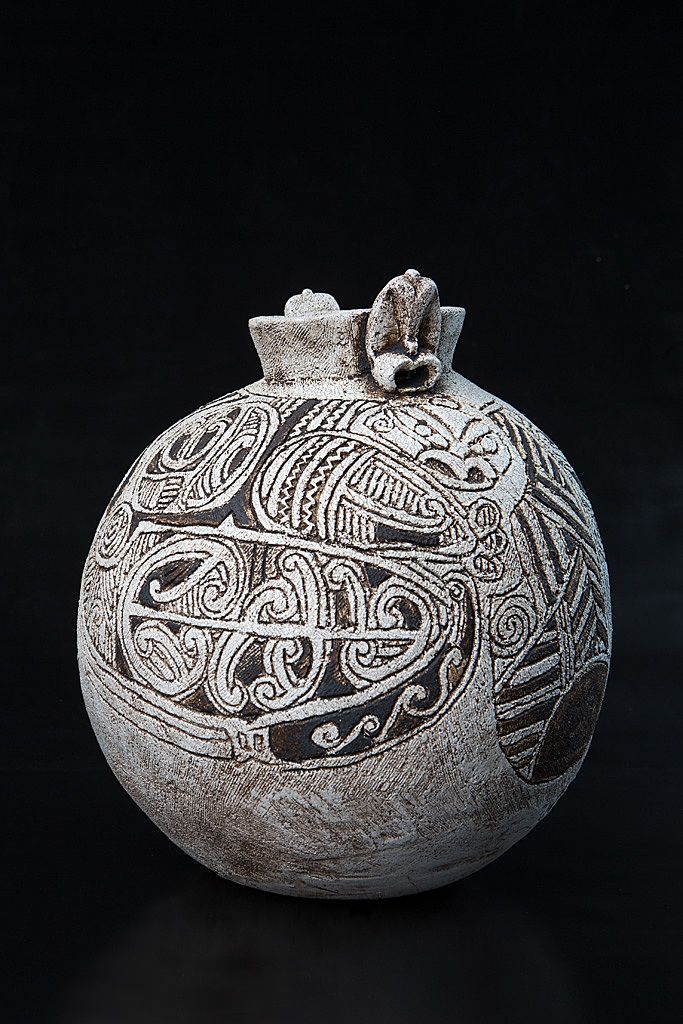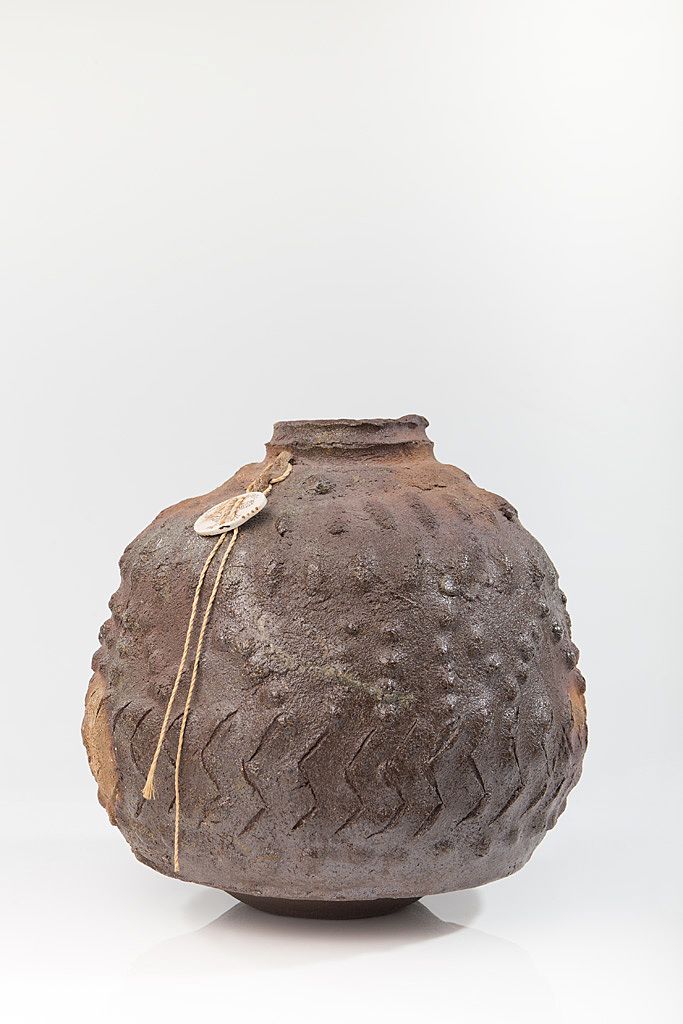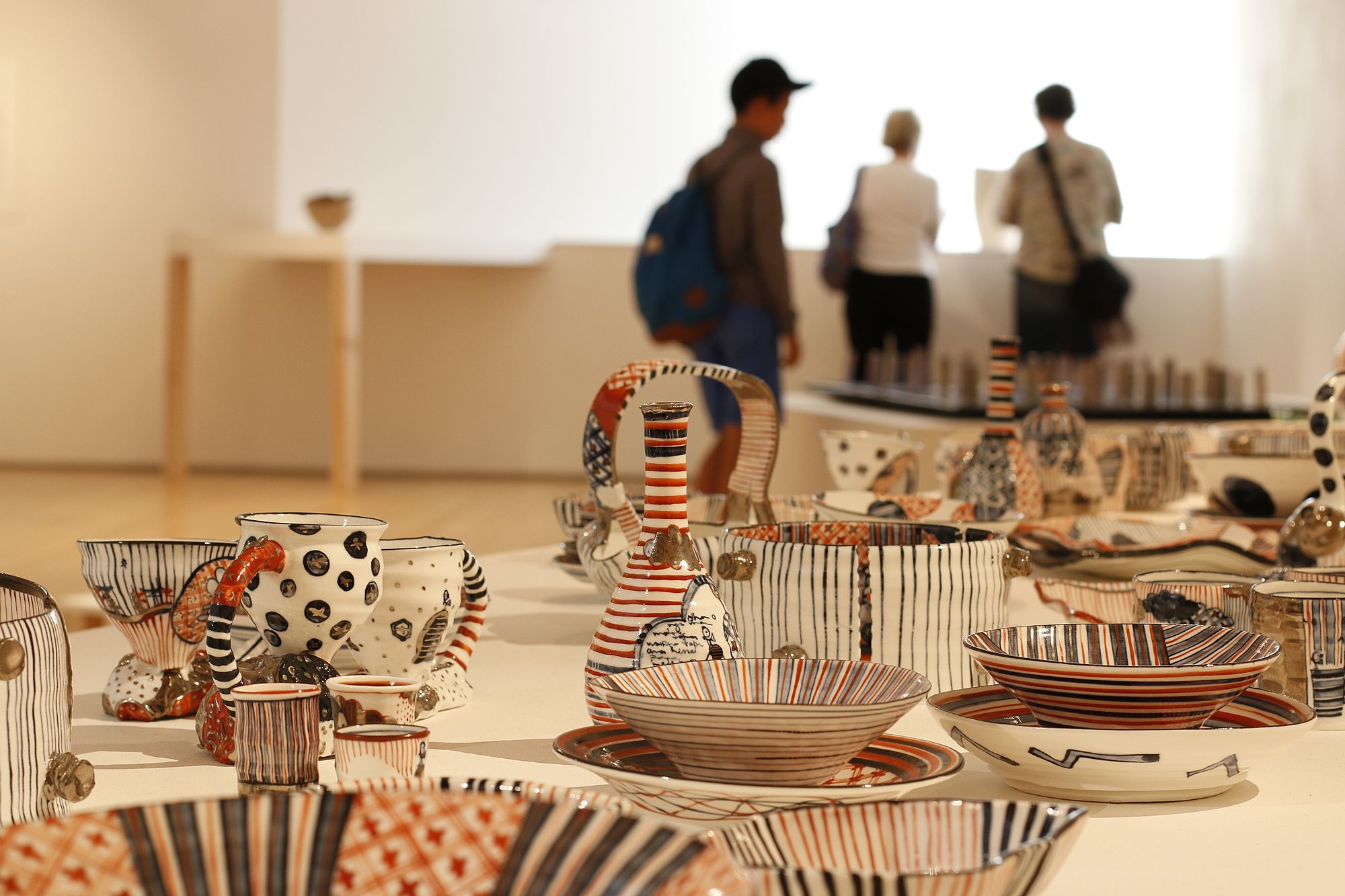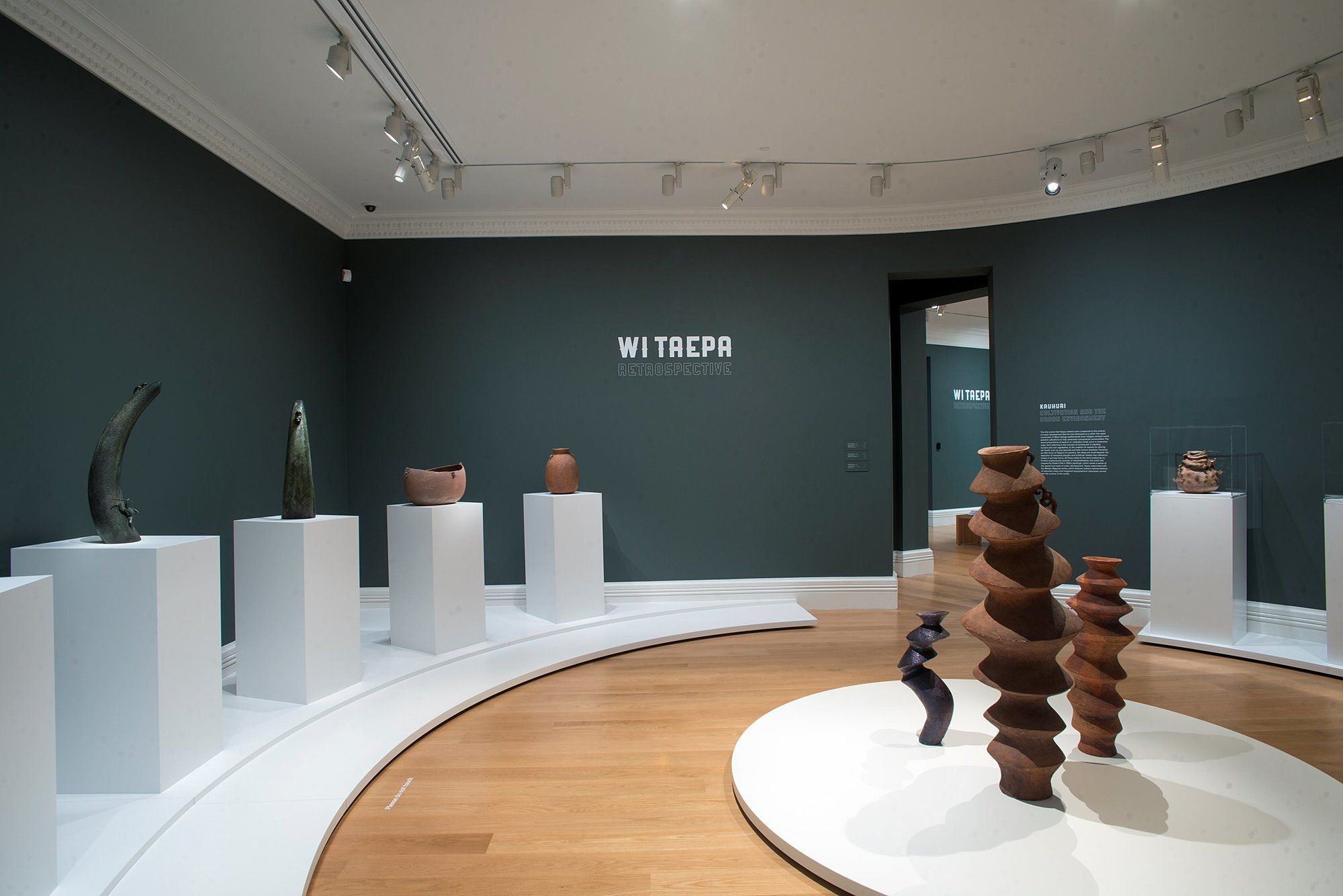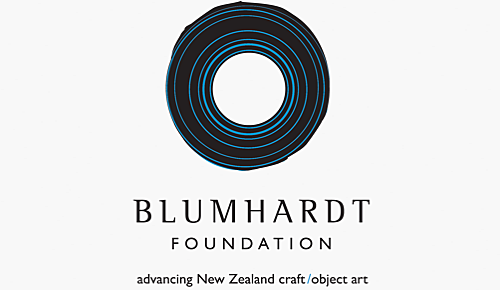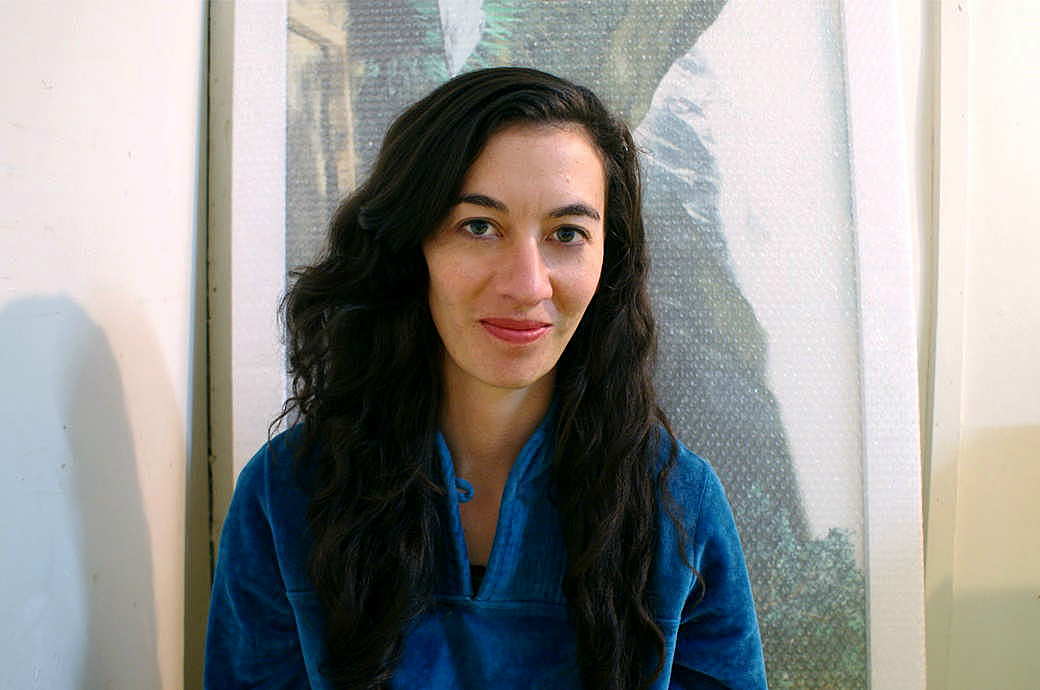A Hole in the Pocket
Bridget Reweti on the reciprocity that sits at the heart of uku practice in Aotearoa
Bridget Reweti on the reciprocity that sits at the heart of uku practice in Aotearoa.
Last week a friend told me about their mountain. They described how the active nature of their volcanic mountain requires that its people live in reciprocal balance with it. The fertile soil, employment opportunities, industry and unique geographical features given by the mountain are generally understood alongside the lives, property and livelihood that it regularly takes. My friend also said that one of the tipua of the mountain has a hole in their pocket. This hole provides a flow of sustenance for the people living around the mountain, until there is a shift in molten activity and a renegotiation of the balance occurs. Within landscape narratives, where the force and generosity of natural elements are in a constant negotiation, ‘a hole in a pocket’ effectively describes an active balance of reciprocity between people and the land. Similarly, the porous skin of uku is full of tiny holes. There is perhaps no other medium so instilled with ideas of reciprocity as uku, its tiny holes reminding us of the living, breathing balance between people, land and the art form itself.
As a recognised Māori art form, uku can be seen in public artworks, in wharenui, galleries and academia. The ceramic tiles painted by Shona Rapira Davies and Kura Te Waru Rewiri are a familiar, if often overlooked, feature of Te Aro Park in Wellington. The Wharenui Ihenga on the Waiariki Campus, Rotorua (which was overseen by renowned carver Lyonel Grant) features ceramic pieces within its walls. The annual Toi Māori Art Market boasts a growing number of uku artists every year. There have also been sporadic group exhibitions focusing on the diverse practices of uku artists, from the 1994 exhibition Kurawaka at The Dowse Art Museum curated by Megan Tamati-Quennell, to Uku Rere: Ngā Kaihanga Uku and Beyond, a major survey exhibition first mounted at Pātaka Art + Museum in 2013 and then toured until 2015. More recently was Whenua Hou: New Māori Ceramics, an exhibition made through a partnership between Tauranga Art Gallery and Objectspace in 2016 and shown at both institutions. Even more recently still, in April of this year Auckland Art Gallery Toi o Tāmaki opened the second iteration of Wi Taepa: Retrospective, the first solo exhibition by a Māori ceramicist in the institution’s history (the exhibition was developed in partnership with Pātaka, where it was shown from October 2016 – February 2017).
As this recent bout of exhibitions attests, uku is currently enjoying a time in the limelight. However, recognition of uku within Māori communities, let alone in our country’s art spaces, hasn’t always been a given. As a medium that sits outside of customary practice, connections between narrative and form are integral to positioning uku practices within mātauranga Māori and to its gaining acceptance within Māori communities. Whakapapa establishes the first human as Hineahuone who was made from the clay of Papatūānuku. Auckland Art Gallery Curator, Māori Art Nigel Borell delves deeper into the whakapapa of clay in the Wi Taepa: Retrospective catalogue:
Within Māori oral narratives the union of Parawhenuamea and Pūtoto produces numerous children, including the many varieties of rock and stone and Hineukurangi, their daughter, who is known as the origin of clay. In this narrative, Hineukurangi also includes fired clay made solid in a rock-like state and as such implies the process of firing clay. These connections to land, material and process are understood through whakapapa, the genealogical ties found in Māori creation narratives which are linked to humankind – to you and me.
It is therefore hard to deny that the form of uku is deeply embedded in our cosmology. Furthermore, the repeated use of uku by Māori artists results in a subsequent community ownership and knowledge of the medium. In her masters thesis, the late Colleen Waata Urlich explored links between Lapita pottery and Māori design. Colleen’s research locates uku within the Pacific and brings to light many aspects of clay use. In an interview on Te Ahi Kaa, Colleen states, “[Just] because we don’t have a ceramic culture, don’t assume we don’t know about our natural materials in the whenua that we live in.” Uku not only holds cosmological connections through narrative association with Hineahuone and Papatūānuku but is also used in practical applications of Māori cosmology. For example, when the whenua and pito of a newborn is buried within an uku ipu – a cyclic poetic gesture to say the least.
Perhaps it was there that I started to learn the value of sitting and making together, unworried by outcomes – the conversations, silence or laughter being most important thing
I was introduced to uku as a first-year student on the first wānanga of my Bachelor of Māori Visual Arts at Professor Robert (Bob) Jahnke’s Taharora Marae, Waipiro Bay, when Wi Taepa and Hana Rakena taught us how to make pinch pots. Neither Wi nor Hana taught on the programme, but through family connections had been brought to the wānanga to generously share their skills. Wi showed us how to fire our pots in the 44-gallon drum he had brought to Taharora on the back of his ute. It was connected to a blowtorch, and with the deft touch of one who has worked with clay for over two decades, Wi casually chucked some bags of raw sugar into the portable kiln to give our pinch pots the lick of a sweet dark flame. Aside from my nervousness at not knowing anyone there, the wānanga was idyllic, with the uku tables providing an area for shy students to be part of the group without having to say anything. Those tables felt like a haven, a space where one could sit to make, mould, sculpt – and if it wasn’t working out, you could smash the clay into a deflated ball to start again. Perhaps it was there that I started to learn the value of sitting and making together, unworried by outcomes – the conversations, silence or laughter being most important thing. When I returned to Taharora a few years later those uku tables were brought out again, and instead of a portable kiln the outdoor kitchen fireplace – normally reserved for baking – was ignited for an all-night firing. This felt like a behind-the-scenes look into the dedication and somewhat durational performance of the ‘muddies’ (as the uku artists called themselves). Not wanting to be blamed for burning down Bob's marae, I went promptly to bed after helping to dampen down the flames that had started growing outside the fireplace.
Uku artists have been sculpting and firing together with considerable purpose since the early 1980s. Although there are uku artists who work individually and maintain successful solo practices, collectivity is a recurring theme within the uku trajectory. Collective practice, supported through the likes of Māori clayworkers group Ngā Kaihanga Uku, has established uku as an accepted medium not only in te ao Māori, but integrated within an international Indigenous dialogue and exhibited in white-walled galleries. In 2013, Pātaka Art + Museum mounted Uku Rere: Ngā Kaihanga Uku and Beyond. It was a 27-year survey of Baye Riddell, Manos Nathan, Colleen Waata Urlich, Wi Taepa and Paerau Corneal – all artists connected through their membership within Nga Kaihanga Uku, which was founded by Baye and Manos in 1986 at Ngā Puna Waihanga. In an interview on RNZ’s Te Ahi Kaa you can hear Manos himself talking about the first national hui, held in 1987 at Baye’s papakāinga in “the heartland of Te Whānau a Ruataupari.” The following year’s hui was held on Manos’ marae – “Matatina in the depths of the Waipoua forest” – emphasising the importance of marae-based hui and the embedded practices of eating, sleeping and working together that is so integral to wānanga.
This kind of trade is part of an Indigenous art fabric and exemplifies the gift economies that operate outside of a monetary value
Uku Rere was a poignant survey of these established artists, each with different approaches to their uku practices. The director of Pātaka at the time, Helen Kedgley, wrote that the exhibition “illuminates the strength of the contemporary Māori ceramics movement in New Zealand.” The show included works made 30 years ago – works that have helped shape how uku is viewed today – alongside newly fired pieces, highlighting the continuing momentum of uku practice. It was a major touring exhibition, traveling from 2013 to 2015 to seven galleries throughout Aotearoa. The majority of venues were in regional locations, reflective of the communities the artists themselves live and work within.
In 2015, Manos and Colleen passed away within a week of each other. I didn’t know either of them personally, but have watched the reverberations of loss through friends and art communities who had shared in their knowledge and fireside warmth. Last year I was on a tertiary art acquisition committee and spent most of my time unsuccessfully trying to find some of their work to purchase. Was this indicative of the lack of recognition they received from the commercial art world? Or was it a reflection of my own position as an outsider to the uku community? As I talked with people who knew Colleen, they replied that she often gave her work away or swapped with other artists. This kind of trade is part of an Indigenous art fabric and exemplifies the gift economies that operate outside of a monetary value. It also exemplifies the humility and strong grounding of Ngā Kaihanga Uku towards the accessibility and engagement of art within multiple communities.
It is here, in the exchange of conversations between artists and their communities, that the reciprocity at the heart of uku burns brightest
The five featured artists in Uku Rere have all travelled overseas to exchange ideas, techniques and research. When talking with the various members of Ngā Kaihanga Uku, I’m often amazed by the prolific nature of their work, travel and wānanga with other artists. There are strong ties through both personal relationships and networks developed through Toi Māori with Native American and First Nations artists. Many Ngā Kaihanga Uku members continue to travel to both Canada and the United States, strengthening the reciprocal bonds between themselves and these practitioners who live across oceans yet are also exploring connected ideologies. One member told me about their plans to travel as a collective to Astoria and continue a relationship with a Hawaiian artist who has built an anagama kiln and intends the first firing to be dedicated to Manos and Colleen. It is here, in the exchange of conversations between artists and their communities, that the reciprocity at the heart of uku burns brightest.
Although supported at times through organisations such as Toi Māori or Creative New Zealand, artist relationships are nurtured outside of institutions and gallery walls. In conversation with Stevei Houkamau, a younger member of Ngā Kaihanga Uku who was mentored by Wi Taepa, she tells me that with Wi it was “a very natural progression into a tuakana/teina relationship. Wi would call and check in on my progress while I was at Toihoukura [School of Māori Art and Design] and came up three times to work with me. I left after a year and created a relationship with Paerau, and also Manos and Colleen.” A tuakana/teina relationship develops in various ways; whether over a long duration or quickly because of time and pressure constraints, it is synonymous with the supportive development of practising art. My own tuakana relationships involve short, concentrated periods of time together coupled with reflective bouts of almost complete radio silence. They are relationships accepting of absence, dynamic in their continued conversations which ebb and flow with support, with critical questioning and safety. In a somewhat romantic view of uku, I imagine sitting kiln-side for hours on end would naturally result in some in-depth explorations – not just of uku, but of life itself. Knowing the importance of these reciprocal relations, I can’t help but wonder how galleries might exhibit uku in a way that acknowledges these ceramics as a continuation of these conversations and relationships? How can I, as a visitor to the gallery, become part of the reciprocal exchange that is so embedded in uku?
For such a tactile medium, it can be a relief to be allowed to touch and feel the weight of works
The 2016 exhibition Whenua Hou: New Māori Ceramics toured to eight locations and featured work by Dan Couper, Davina Duke, Stevei Houkamau, Hera Johns, Tracy Keith, Jess Paraone, Hana Rakena and Aaron Scythe. When considering a medium where whakapapa is so integral to gaining a fuller understanding of the work, it would be easy to focus purely on practices influenced and developed within the strong collective model of Ngā Kaihanga Uku. Yet Whenua Hou includes the voices of artists who are not part of Ngā Kaihanga Uku, emphasising the variety of contemporary practices and the continuing development of uku. Hana Rakena’s work #everythingbetweenyouandme (2016) engaged with gallery visitors through both acts of gifting and social media. Consisting of ceramic blocks that could be uplifted from the gallery in exchange for an Instagram post, the obligation to reciprocate was left up to the visitor. For such a tactile medium, it can be a relief to be allowed to touch and feel the weight of works. The Instagram posts situated the visitors as ‘followers’ and encouraged conversation and involvement with the work beyond gallery walls. #everythingbetweenyouandme creates another layer of accessibility through digital means, furthering the facilitation of ideas of reciprocity that are so integral to uku. As a work that aims to reach beyond a defined structure of uku, it can also be indicative of Whenua Hou’s acknowledgment and inclusion of artists who practice uku outside of Ngā Kaihanga Uku.
Wi is continuous – through the prolific nature of his making, the testament of his sons (who are established artists in their own right and media), and also the legacy of his students and those he continues to mentor
Wi Taepa: Retrospective opened just over a month ago at Auckland Art Gallery, curated by Nigel Borell in partnership with Pātaka Art + Museum. Anyone who has had the pleasure of meeting and talking with Wi about his practice will understand the depth of his life that is embedded in the works. In 2012, Reuben Friend (Māori and Pacific Curator for the Dene Gallery at City Gallery Wellington at that time) curated Wi Taepa, an open and honest exhibition that acknowledged the effects of the Vietnam War on the soldiers who went, of whom Wi was one. At the gallery exit was a ceramic basin with a plug but no water. A friend and I marvelled at the work’s portrayal of not being able to cleanse oneself from certain aspects of life. I later mentioned to Wi the poignancy of the work and he replied with a laugh, saying it was meant to be filled with water but somehow that didn’t happen. In an interview for Standing Room Only on RNZ, Nigel Borell describes Wi’s work as “a flawed beauty…because they are beautiful, but there are these amazing flaws that make them all the more compelling.” Wi’s work is distinctive because of the freedom and ability he expresses to experiment with both form and texture. Wi is continuous – through the prolific nature of his making, the testament of his sons (who are established artists in their own right and media), and also the legacy of his students and those he continues to mentor. As Nigel writes in the exhibition catalogue, “[R]eturning to the ethos of the collective and the value of community, Taepa remains committed to a practice that uses art making as a tool to help others gain a better understanding of their own ability and potential. It is Wi Taepa’s ability to connect and relate to people, to guide them in finding their own creative voice. That is his greatest gift and talent.”
As an outsider peering into an uku world, I find myself viewing these works in galleries as suspensions of continued conversations. Like a measure of time that has stopped amid the fluidity of relationships, uku and all that it brings with it is not the full stop to end a sentence, but rather the slow inhale taken before the viewer, the student, family member or mentee reciprocates.
Header image: Hana Rakena, Inlet vase (detail), 2013. Photo courtesy of Tauranga Art Gallery.
This piece is presented as part of a partnership with Blumhardt Foundation. They cover the costs of paying our writers while we retain all editorial control.
